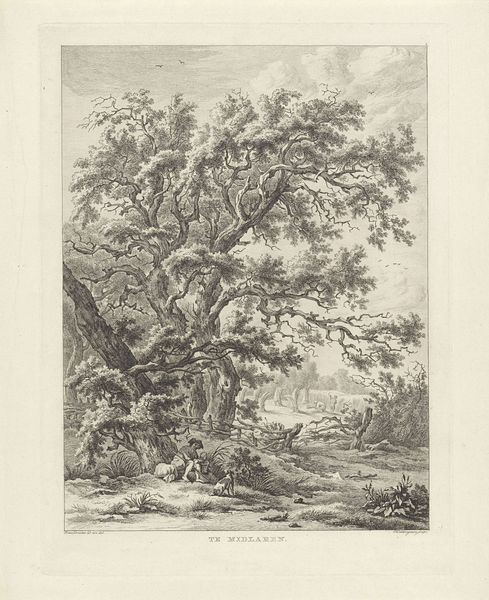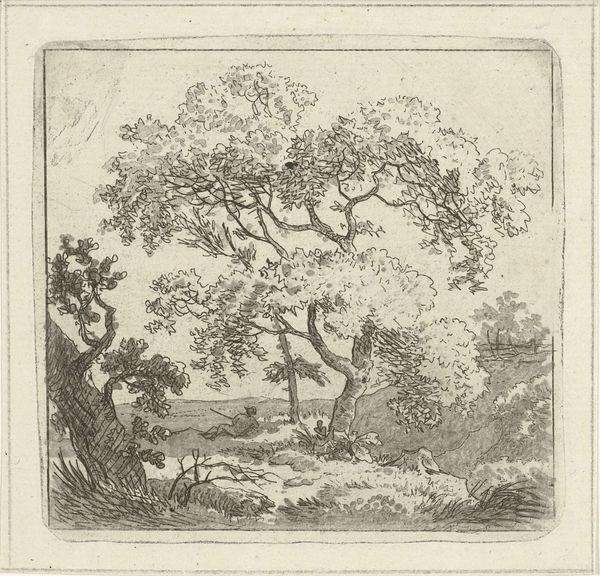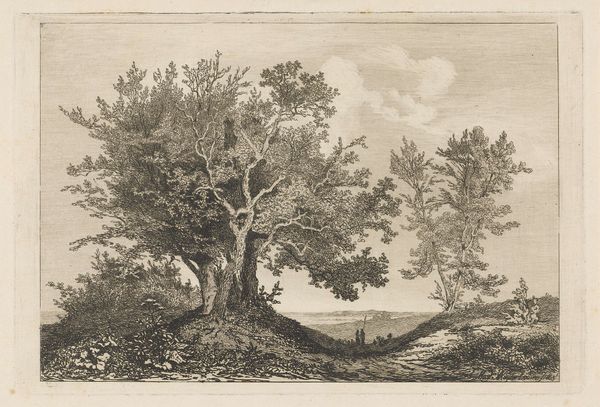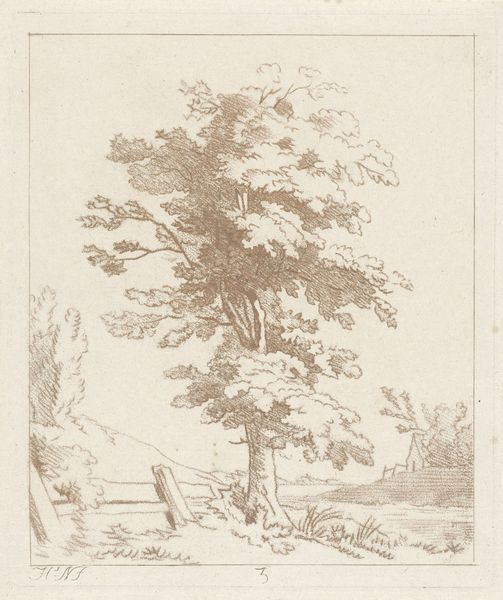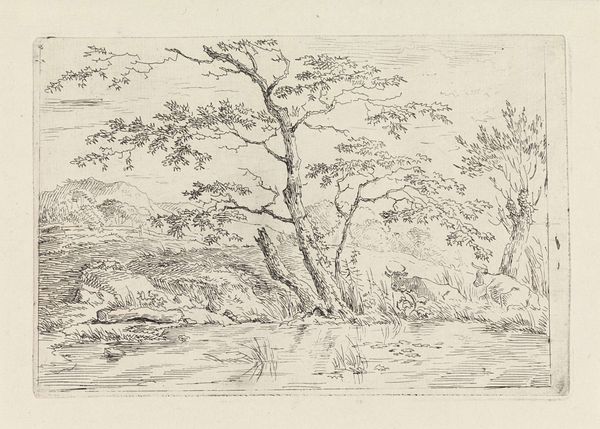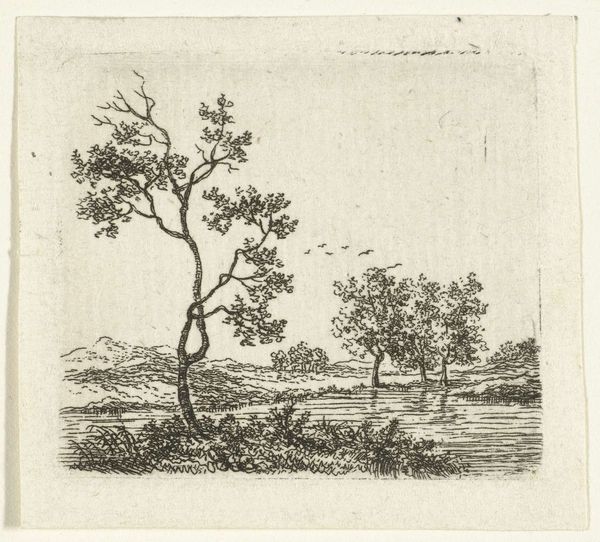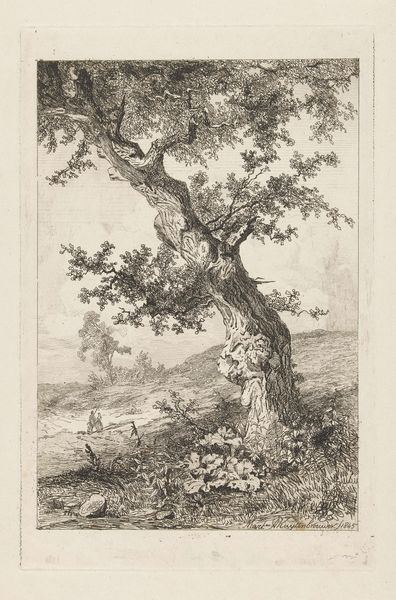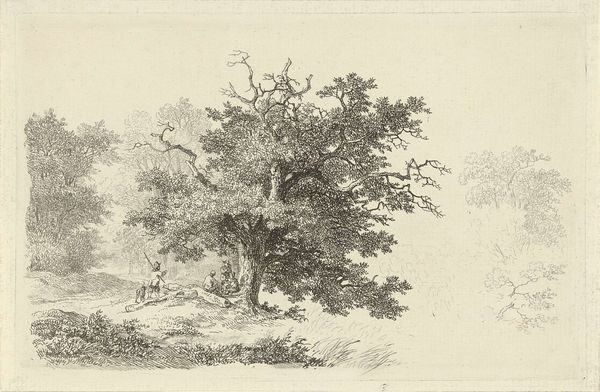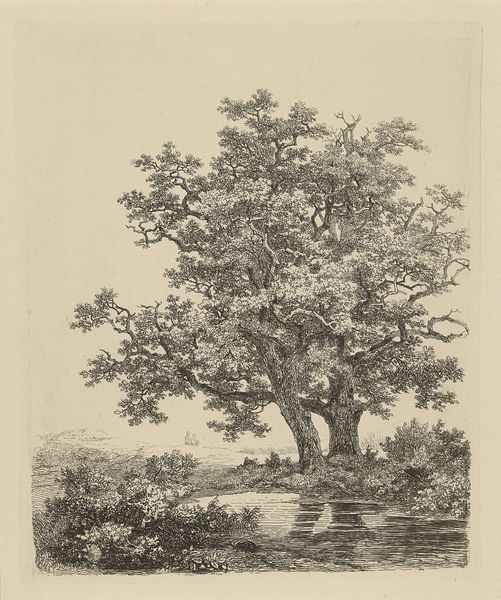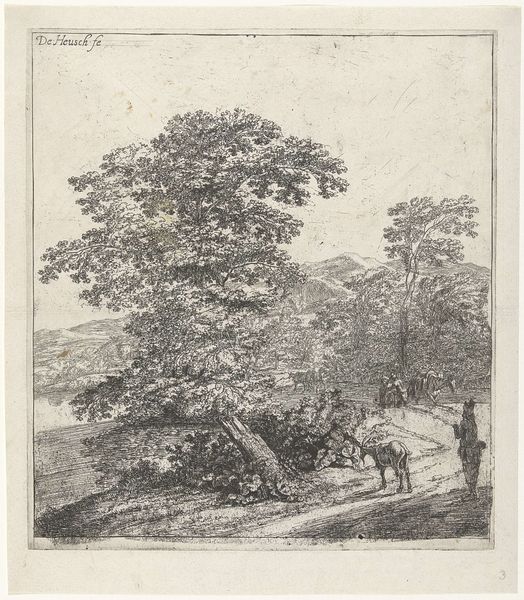
print, engraving
# print
#
pencil sketch
#
old engraving style
#
landscape
#
romanticism
#
line
#
engraving
#
realism
Dimensions: height 203 mm, width 162 mm
Copyright: Rijks Museum: Open Domain
Editor: This is Louis Jacopsen’s “Landscape with Trees and Bridge” from 1828, an engraving. I'm struck by the level of detail achieved through what looks like a fairly simple medium. What’s your take on this print? Curator: As a materialist, I see this engraving as an artifact of 19th-century production. Consider the labour involved: the artist's hand meticulously incising the metal plate, the potential for multiple impressions transforming this single image into a commodity. Do you think the "original" has a superior value compared to later copies from the same plate, and why? Editor: That's an interesting way to put it! I hadn’t thought about the copies. I guess traditionally we value the artist's hand in the original, but each print carries that mark of labor too. Curator: Precisely! And how does the bridge’s wooden construction contrast with the permanency implied by the engraving? It speaks to nature versus industry of the period. Where was the wood sourced from? How did its purpose align with the natural materials readily available to them? Editor: I see your point. It seems like the bridge represents a temporary intervention in an otherwise enduring landscape, frozen in this engraving. Curator: The choice of engraving, then, solidifies a moment within a transforming material and economic landscape. Romanticism, often associated with a yearning for nature, ironically depended upon industrial advancements for dissemination through printmaking. So, in this “romantic” image, what is the real connection to industry that shapes its material existence? Editor: It makes you wonder what Jacopsen intended, romanticizing nature but using a printing process… That tension between handcraft and reproduction shapes its meaning and, of course, its reach. I see it in a totally new light. Curator: Exactly, analyzing the process and materials deepens our understanding of the artwork's cultural and historical context, complicating simple narratives of "nature" and "art."
Comments
No comments
Be the first to comment and join the conversation on the ultimate creative platform.
